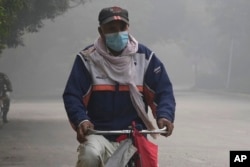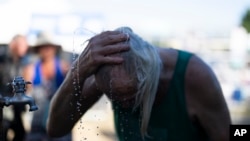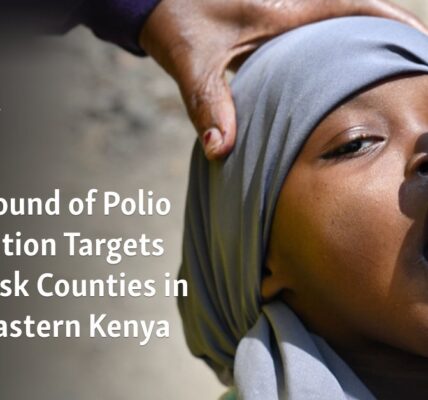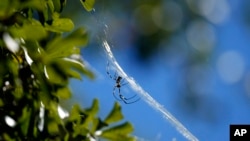Pakistan’s severe air pollution problem is highlighted by the poor air quality in Lahore.
As a child in Lahore, which is known as the cultural capital of Pakistan, Mariam looked forward to fall as it meant being able to engage in outdoor activities after enduring months of scorching summer temperatures. However, now that she has young daughters, she cannot imagine them having the same experience due to Lahore’s air being ranked as the most polluted in the world, especially during the cooler months.
The mother of two explained that breathing in the polluted air can be detected through smell, taste, and physical sensation.
According to the Air Quality Index (AQI) run by Swiss air purifier manufacturer IQAir, Lahore was ranked as the second most polluted city in the world for air pollution on Tuesday, with an AQI reading of 345 in the morning.
An air quality index (AQI) reading above 151 is considered unhealthy, and above 301, the air is deemed hazardous for breathing.
According to IQAir’s index, Lahore has been designated as the most polluted city of 2022.
Smog emergency
Since the beginning of November, the city, along with other cities in Punjab, the largest province in Pakistan, has been facing a month-long smog emergency.
Smog – a combination of smoke and fog – is a specific phenomenon that occurs when certain pollution particles mix with cold, moist air and hang close to the ground, reducing visibility.
The highest court in Punjab has directed the closure of public schools on Saturdays until January 2024 in an effort to decrease traffic congestion and limit exposure to harmful air pollutants. Additionally, the court has requested that the provincial government create a telecommuting policy for private businesses.
A year-long emergency
During the autumn season, the air quality in Punjab is worsened due to the burning of agricultural waste by farmers from both Pakistan and India. Despite this, environmental experts argue that the government is not acknowledging the severity of Pakistan’s pollution issue, which is mainly caused by the use of poor quality and high-Sulphur fuel.
According to environmental lawyer Ahmad Rafay Alam, air pollution has been a long-standing problem in cities in Pakistan for about 15 years. He notes that the country has faced a year-round regional air pollution crisis and often only considers it a problem specific to Lahore.
The Energy Policy Institute at the University of Chicago created the Air Quality Life Index, which shows that only 1.7 percent of Pakistanis breathe air that meets the country’s national air quality standard.
In 2017, the provincial Environmental Protection Department developed an 11-point policy, as directed by the court, with a focus on regulating emissions from vehicles and factories.
The court was not pleased and formed a smog commission to thoroughly examine and propose solutions for bettering air quality.
According to Naseem-ur-Rehman Shah, the secretary of the provincial Environment Commission, in an interview with VOA, 80% of factories are now keeping track of their emissions and 70% of brick kilns have switched to a more environmentally friendly design.
However, the data presents a frightening depiction.
According to Abid Omar, the founder of Air Quality Pakistan Initiative, the data indicates that the air pollution in Lahore is significantly higher than the WHO’s safe levels, with figures ranging from 30 to 40 times higher. This information is gathered by a group of volunteers who use IQAir monitors to track air quality.
Omar resides in Karachi, a city that frequently vies with Lahore and Delhi for the title of having the most polluted air in the world.
Monitoring
The environmental agency of Punjab collects data from only five air quality monitors in Lahore, despite the city’s population reaching almost 15 million.
Omar’s initiative in Pakistan for monitoring air quality involves 50 devices that contribute to IQAir’s Air Quality Index.
Shah’s department is not utilizing PAQI’s information due to concerns about standardization, but they are currently making preparations to incorporate multiple monitors of their own.
In the year 2019, the regional authority responsible for environmental affairs was compelled to amend its criteria for air quality due to the revelation that officials were downplaying pollution levels by utilizing inadequate standards.
Alam served as the legal representative for the individuals making the complaint in their court case against the regulatory body.
Knee jerk reaction
Due to a significant decrease in air quality this month, both the provincial and city governments have increased efforts to enforce regulations on factories, brick kilns, and vehicles emitting smoke.
According to city officials, local news outlets stated that over 16,000 cars received tickets and fines totaling over $100,000 since the emergency began.
Omar refers to these administrative measures as a hasty response that lacks lasting effects.
According to Omar, the policy will not be effective due to its random and impromptu implementation.
Shah responded to the criticism by stating that it was unjust. He added, “We are actively taking steps to remove pollution sources.”
Policy shift
Alam noted that one solution to address the issue of pollution in our country is to enhance the effectiveness of our refineries, as they currently do not produce high-quality fuels. However, he acknowledges that transitioning to renewable energies is a costly and time-consuming process, citing studies that highlight the fuel and energy industries as major contributors to pollution.
In May of this year, the National Clean Air Policy was implemented by Pakistan’s Ministry of Climate Change. Its goal is to decrease damaging emissions within the next decade through implementing measures in transportation, industry, agriculture, waste, and household sectors.
Implementing such a major change will require a significant investment of time, funding, and determination from the government.
Mariam, who has three air purifiers in her house, can currently only keep her daughters indoors as much as she can.
“It almost gives the sensation that you’re being denied a fundamental need – the ability to inhale clean air.”
The University of Chicago’s Air Quality Life Index reports that breathing polluted air is causing Pakistanis to lose an average of 3.9 years in life expectancy. In Lahore and other parts of Punjab, residents are projected to lose anywhere from 3.7 to 4.6 years of life expectancy due to poor air quality.
Source: voanews.com




